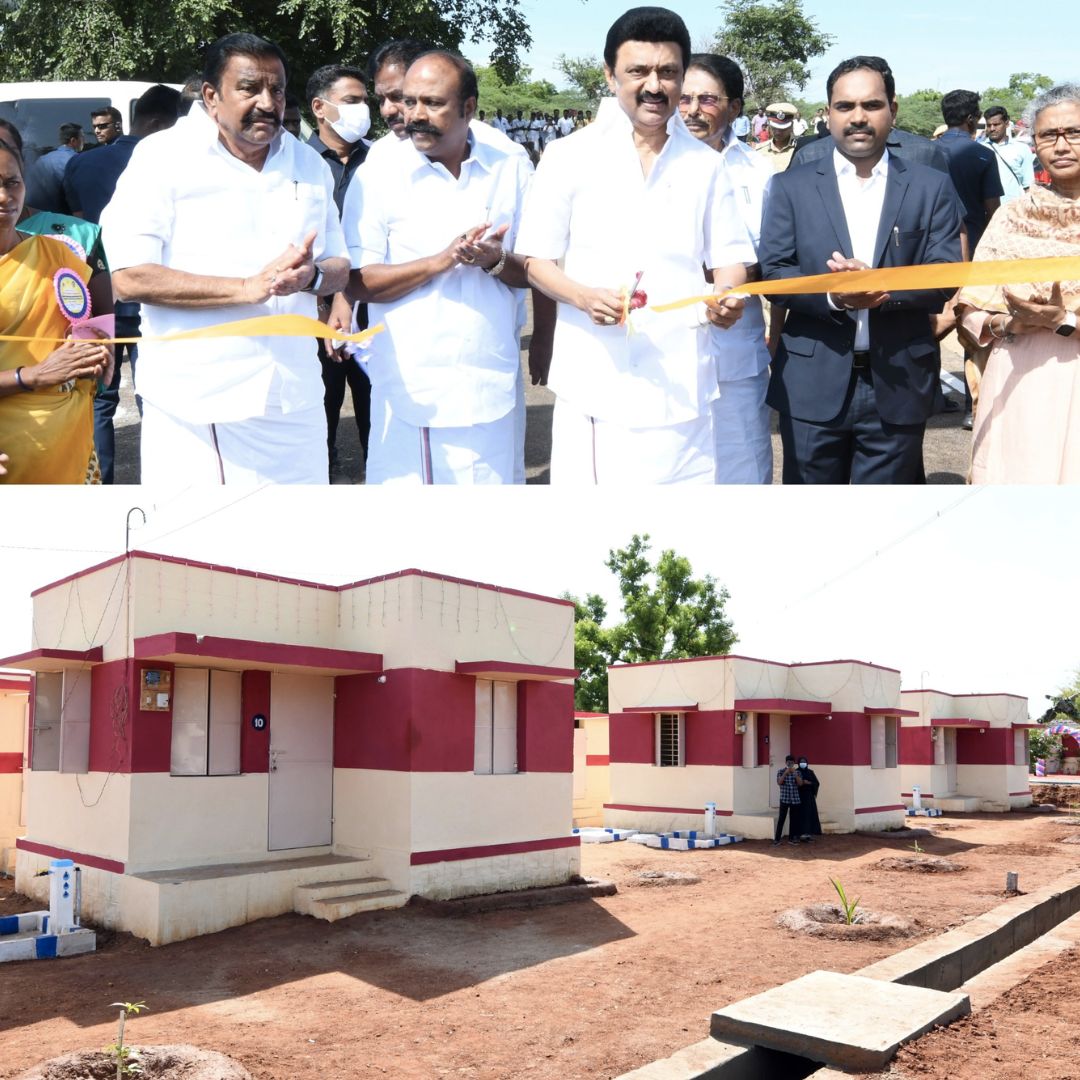
Image Credits: Twitter
Tamil Nadu
Tamil Nadu: Welcome To 'Equality Village' Where All Castes & Religions Can Live Side By Side
 |
|The objective of the village is to ensure that people from all castes and religions live together, share civic amenities and services without any discrimination or differential treatment.
A decade after it was constructed, Tamil Nadu Chief Minister M K Stalin on Wednesday (June 8) inaugurated Periyar Samathuvapuram or equality village at Kottai Vengaipatti near Sivaganga, comprising 100 houses, a park, a creche, a library, among other facilities.
Samathuvapuram housing scheme was first introduced in 1997 by then Chief Minister and Stalin's father M Karunanidhi to promote social justice and egalitarian living. The objective was to ensure that people from all castes and religions live together, share civic amenities and services without any discrimination or differential treatment.
Under the scheme, 40 per cent of the houses were allotted to the Scheduled Caste (SC) community, 25 per cent each for Backward Castes (BC) and the Most Backward Castes (MBC) and the remaining 10 per cent to others. The first Samathuvapuram project was launched in 1998 in the Madurai district.
The scheme was initially named as 'Periyar Ninaivu Samathuvapuram' after Tamil social reformer Periyar EV Ramasamy Naicker. The ₹3.5 crores Sivaganga village inaugurated is the 235th facility in the state and ninth in the district. The project was announced in 2010-11, however, after DMK's defeat in the 2011 Assembly elections, the AIADMK government did not go ahead with their rival's signature project, The Indian Express reported.
Promoting Social Harmony
The idea of 'equality village' was mooted to promote spatial equality, social harmony and social capital of the marginalised and rural sections at a time when the residential areas in Tamil Nadu were known mainly as Cheries (Dalits), Nagars (caste Hindus) and Agrahaharams (Brahmins). Even the government-sponsored housing schemes didn't erase segregation except that Cheries became colonies.
When it was introduced in 1997 as an egalitarian community, it had a system in which the District Collector obtained an undertaking from each family that they would not install the statues of any religious or community leader, won't sell or pledge the houses for 15 years, will use a common burial place, besides other conditions.
Also Read: Elderly Couple In Bihar Beg To Collect Rs 50,000 'Bribe' To Get Son's Body From Hospital